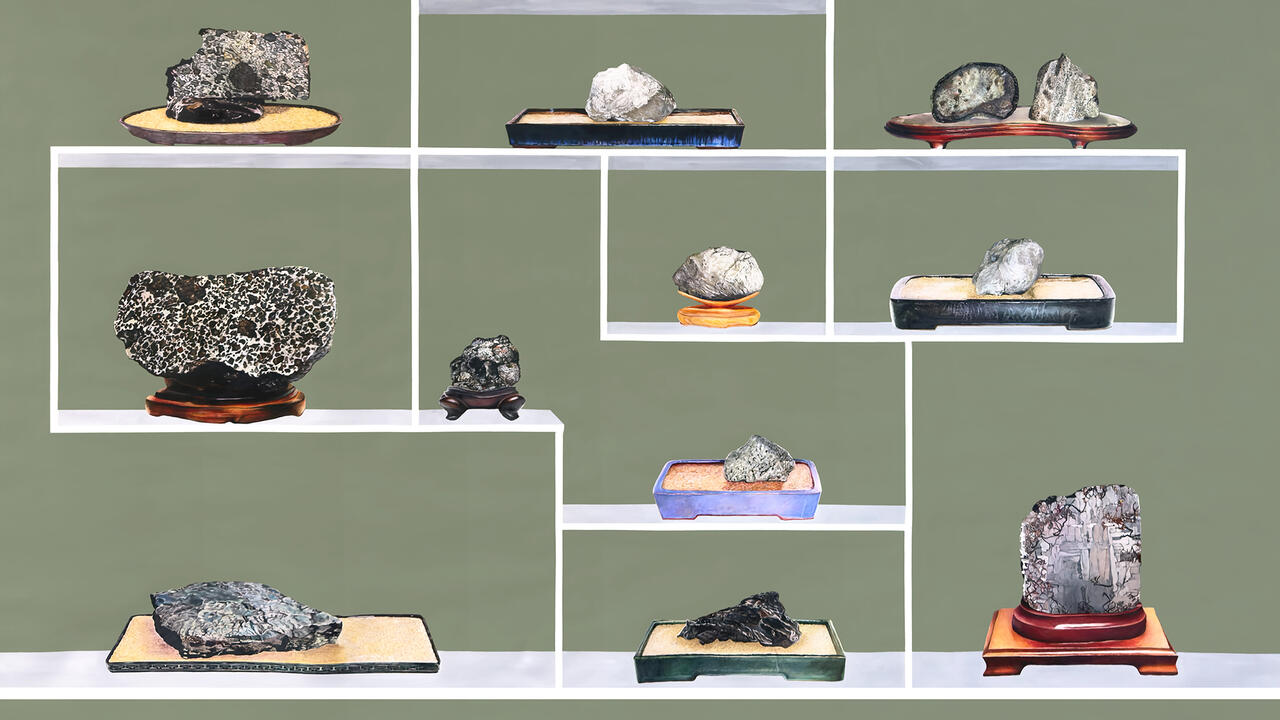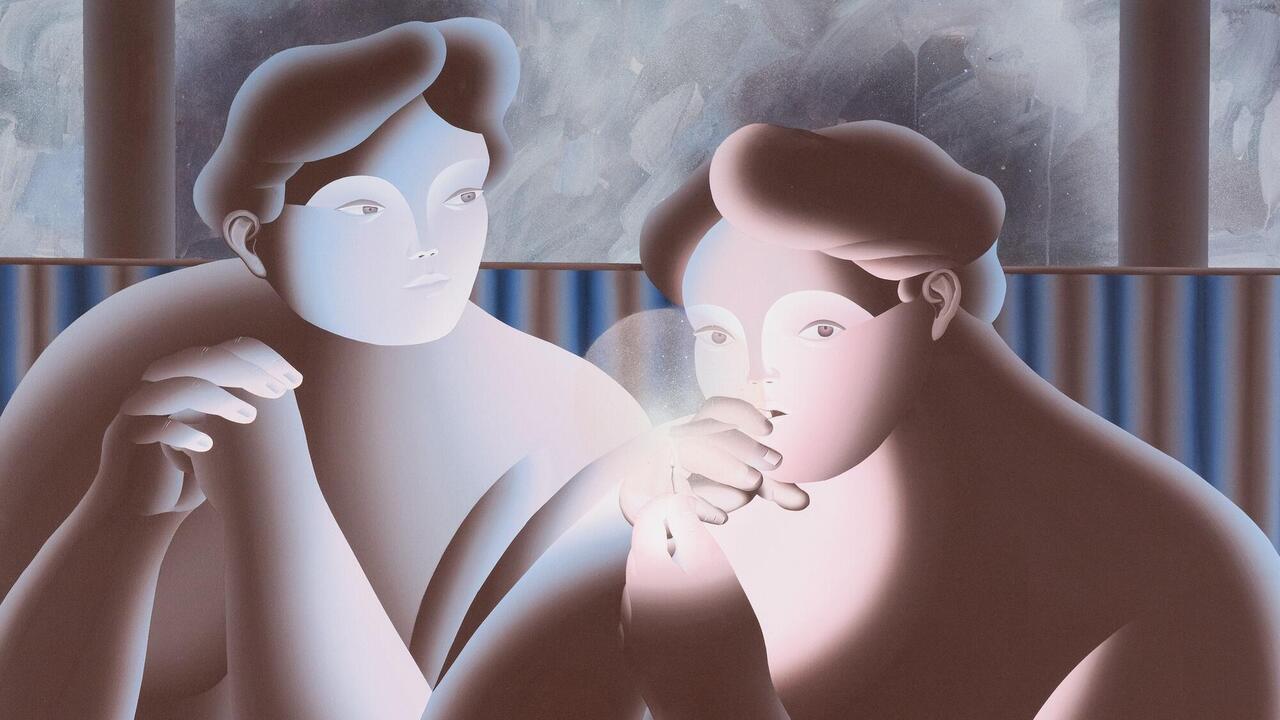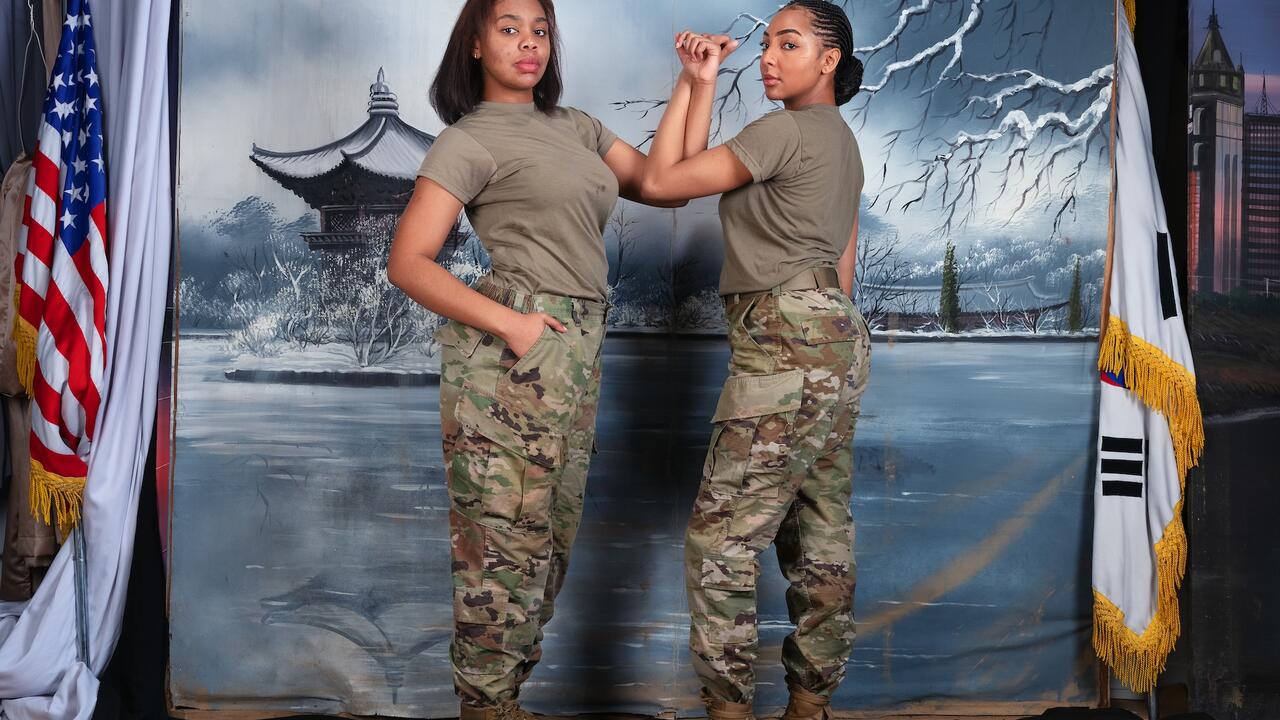A Multisensory Exquisite Corpse: Haegue Yang at Seoul’s Kukje Gallery
Drones, 1980s synth-pop and a giant chess board turn the show into a game whose rules are never quite clear
Drones, 1980s synth-pop and a giant chess board turn the show into a game whose rules are never quite clear

Eerily crackling through an old speaker, backing singers ‘ba-pa-ba’ to xylophones. A woman touts the coming of the millennium, her voice spinning giddily over thrumming guitars and squelching synths. Playing outside the entrance to Haegue Yang’s solo show in Kukje Gallery’s K3 exhibition space, Hae-kyung Min’s 1982 track ‘AD 2000’ sounds like a sonic artefact, rough-edged and faded, a far cry from the glitzingly optimistic original.
The exhibition’s graphic identity is similarly nostalgic: its title, ‘When the Year 2000 Comes’, is rendered in a 1980s-style digital font on the invitation card to the opening. Beneath the text, a 1977 watercolour the artist made as a child with her siblings depicts a team of demonic creatures on a ship.

The watercolour hangs in the hallway, introducing Yang’s show. Mounted on chicken wire, its characters appear menacing, surrounded by flying elements – flags, planes, bombs. Entering the main exhibition space prompts similar feelings of fear and bewilderment. Fractals of geometric objects span different dimensions: the floor, the ceiling, a mural. Strings of bells dangle from spheres like weapons of torture over bouncy balls on crosses of tape. Revolving projectors protrude from the walls like CCTV cameras, casting shadows through venetian blinds onto the mural. A man in scrubs operates an ergonomic surveillance vehicle beneath cascades of airbrushed greenery, while dry ice spills in through the back door beneath a drone. The effect is alluring: is this a Silicon Valley data scientist’s dream of deliverance? A plasmic prospectus for an iHospital?

Outside, a crowd has gathered; Yang is having her picture taken with a queue of fans. ‘AD 2000’ continues to play faintly: its mishmash of 1970s rock and pop styles pantomiming Japanese and Western inspirations. Lauding an age of ‘greater convenience’, Hae-kyung’s lyrics are the product of a period in which South Korea’s economy was booming even as the ruling military regime tightened its grip on the country in the wake of widespread student pro-democracy protests in 1980. In a press interview, Yang suggests that ‘AD 2000’ was seeking to promote an image of obedient youth to its listeners: propaganda dressed up as entertainment.
The strips of tape that cover the gallery floor form a grid, bisected by diagonals, which appears to emanate from the sculptures. Modelled after the board used in Janggi (Korean chess), the pattern swerves into areas of irregularity as it follows the path of Yang’s ‘pieces’ – hovering, rolling, creeping up the walls. Her Sol LeWitt Vehicles (2018) boast a similar rebellious streak. Aluminium cube frames affixed with blinds, wheels and handles turn the legendary minimalist’s ‘Variations of Incomplete Open Cubes’ (1974) into mobile, interactive devices. If LeWitt went by the principle expressed in his 1967 essay ‘Paragraphs on Conceptual Art’ that ‘the idea becomes the machine becomes the art’, Yang seems to be taking his machine and making it glitch.

Stay longer in the gallery and other voices, sounds, smells emerge. An exhibition handout presents a timeline edited by the artist, twinning the biographies of French novelist Marguerite Duras and Korean composer Isang Yun, who died within a year of each other in the mid-1990s. Titled A Chronology of Conflated Dispersion (2019), it chronicles two people navigating the rubble of war, revolution and Western imperialism, side by side, year by year, forming unexpected rhythms between their vastly different journeys. Meanwhile, birds chirrup at each other from a pair of speakers, abstracted from a recording of the third Inter-Korean summit between the leaders of North and South Korea in 2018. And strange mineral smells linger around the objects, at once earthy and medicinal. In this multisensory exquisite corpse, Yang tantalizes us with secret symbols, probing our desire for narrative mastery.
Main image: Haegue Yang, 'When The Year 2000 Comes', 2019, installation view. Courtesy: the artist and Kukje Gallery, Seoul



















